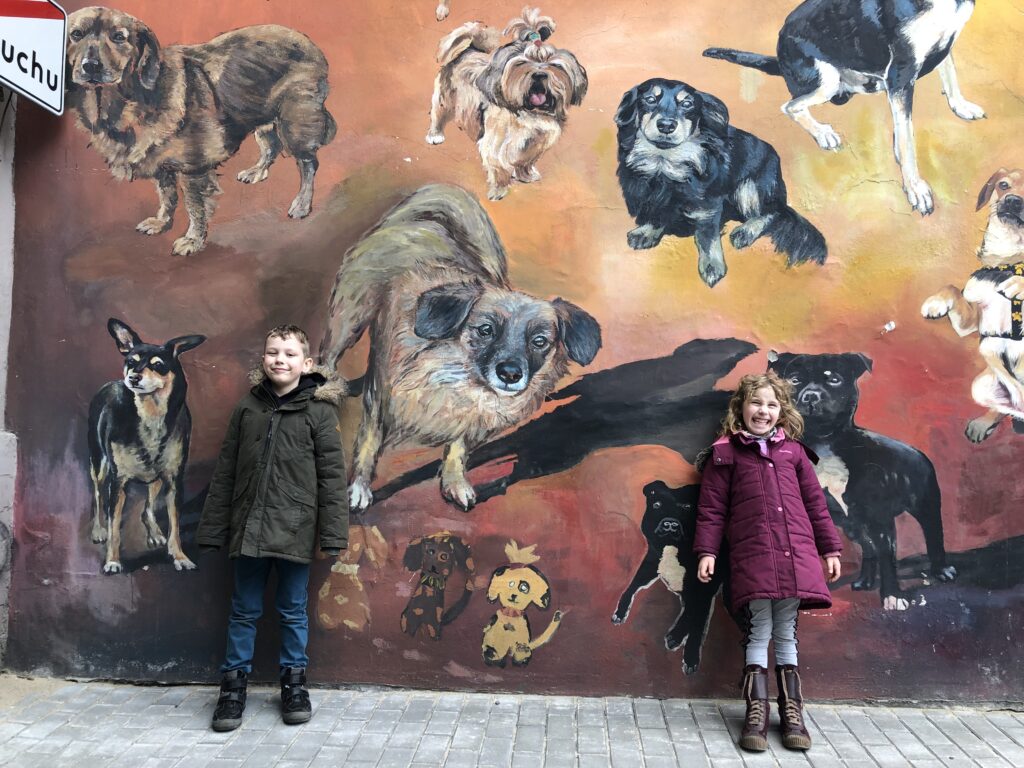We all have some or know some! Children.
When it comes to sketchbooking, little people are usually right at the front of the creative explorative queue. If they see what you are doing chances are they will want to roll up their little sleeves and get stuck in as well.
And let me tell you – we need to do MORE to foster the next generation of creatives and the sooner we start the better.
That means if you have little people in your environment you should consider factoring them into your sketching activity. It’s not that hard to do. There are, however, some helpful tips you should consider about how you do so! They have been tried and tested by my household.
- When you start your sketchbook, start one for them too – just in case! Rather than the traditional A5 hard backed book I recommend in my other posts I would suggest that you take a look at a hard backed spiral bound sketchbook for them. Make sure the paper is heavier weight too so that they can explore using a variety of different medias. A spiral bound notebook will have a lot more “give” in it. By “give” I mean the capacity for extra space to stick and glue any paper into it that is done outside the notebook. A child’s sketchbook is essentially a scrap book at an early age. Its important to not restrict creative response but use the sketchbook as a place of gathering sketching together. I would also make a fuss of “the book” and embellish the front cover with a cheerful postcard or create a strong sense that this sketchbook belongs to said little person to fill alongside you filling yours.
- Children are great copiers! Share your work with them! Let them watch you as you draw. Create a sense that they too can pick up their sketchbooks at any given moment and draw too. Talk about what you are drawing with them and include their lives in the pages of your sketchbook. Make a list together of things you could draw at the same time.
- Start simple! Have a go simply mark making. (I will be exploring this in my other blog posts in coming months so watch out for it.) This is a great exercise to get them confident picking up a pencil or paint or pen. By mark making I mean exploring different medias on paper by literally making marks. Fine lines, thick lines, blobs of paint that dry and then are scribbled over, dots, circles, zig zags and so on….You could also let them loose on a large piece of paper and see what shapes they naturally create and how they approach the exercise. More on this in other blog posts.
- Choose your materials. I think most households will have a pen and pencil box that over the years have things added to them including dried out felt tip pens, snapped crayons and the odd Q Tip! I know we do! But there are some stable classics that I think are worth buying. I don’t usually recommend particular brands but alongside a child’s starter watercolour kit as well as crayons, the Stabilo Art 3 in 1 Woody Pencil is a MUST! (Don’t forget to buy the sharpener with them!) These are chunky pencils that you can draw with and then use a watercolour wash when you swish a wetted brush over your drawings. They can also be dipped into water and then sketched with. Why do we love these? They are chunky so can be gripped in small hands easily and they help stabilise a child’s motor skills. Moving onto the use of a pencil after using these is much easier. They triple up and help create a variety of techniques from dry to wet, and they are fantastically portable. Oh…and I have unashamedly used these for my own sketchbooks too as their colour ranges are bright and fun. Anything that supports strengthen the fingers and motor skills will invariably lead to easier development of hand eye co-ordination. As we all know hand and eye co-ordination is also important in other learning and developmental areas. Drawing can be a super fun way to achieve this! Choosing the right support materials to help this development is, in my opinion, essential.
- Teach how to use materials from the start.. As an artist I had to stop myself being possessive of my art equipment. Children are so clever when it comes to spotting the differences between what they have been given to use and the materials you may be using! “What are you drawing with there mummy? Can I have a go?” So – I made a decision from the get go that I would teach them how to use materials properly (albeit their own cheaper versions). Sharpen pencils and don’t drop them (so the leads inside don’t snap and the pencil lasts longer). Keep the colours in the watercolour palette as clear as possible and always rinse out your brush properly to make sure it lasts longer. Put lids back on pens. And so on. Encouraging them to adopt these behaviours in exchange for stars or small rewards gives them the added boost of being entrusted with something they can take care of and ultimately take pride in.
- Celebrate the achievement! I have a wall dedicated to my children’s art work in my studio! I cannot STRESS how important this bit is! I have just recently framed a big A3 drawing my daughter has coloured in with crayons of an abstract elephant! She sees her creation every day and builds her artistic confidence. Let me tell you too that children can teach us so so so much about drawing just through how they interpret what they see. I wish I had a more childlike flair to my sketching. In the process I have been through with my children they all have a unique gifting when they draw. What you may not know is that some of my colour palettes in my sketches and artworks have been mixed and put together by my little girl who has an amazing eye for colour. Always seek the skill they have and encourage them no matter what!
- Leave sketchbooks and age appropriate drawing equipment in an accessible place. I have a tub of pencils and pile of paper that my children can access any time they want. Its just there. Not something they need to ask for or do. It becomes part of their routine and supports them control how they build their own habit. They dictate!
- Use the sketching activity to look at a child’s world differently, discuss their day, or trigger communication Do you ever have discussions with your children about the world around them? Do you ever think – I wonder how they see that? Setting yourselves mini sketching challenges on things like a walk or drive to school for example not only triggers literal interpretations of said walk (leaves collected on the ground, head teacher at the school gates, a muddy field or school playground, a bright blue coat and one glove – other one got lost, the traffic…) but also invariably leads to conversations about characters and feelings. Drawing with your children is a great communication tool especially if they are hesitant to come out and discuss anything that is bothering them.
- Remember children’s attention span is shorter than a gnat!!!!! Last but not least….a child’s attention span is very short so its important to break the sketching activity down to keep a child engaged. Try to change activity every 10 minutes if they are getting bored. (You never know they may stay engaged long enough to keep going!).
I can’t wait to share more of the details and practical activities you can develop over the next few months.
To get information about more of these as well as access to free downloads sign up to my community here!
As always can’t wait to hear from you!
Emily x








